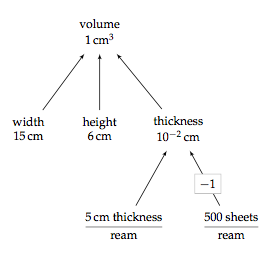Estimations
We have previously come up with some decisions or issues that may need an estimation. This section details some methods for arriving at estimations when we don’t have clear data.
An estimation is our best attempt to quantify something about our world. Often we have to do this with incomplete information and be comfortable with the ambiguity.
An important part of the estimation process is letting go of the idea that your answer will be “correct”. We often must make important decisions without complete information. Your answer will be an imperfect but useful estimation that will give us insight into a decision we are making. You can ask yourself as you begin the estimation how accurate do you need to be? This is a very different practice than many math problems which have exact answers.
Situations
- Deciding between two options
- If your estimation of the benefit of these two options shows a clear winner, you do not need a precise estimate
- The absence of information
- If you have no idea about a quantity a very rough estimate can be valuable
In this graph, we have the resource available, and the cost estimates of two options. The bar heights are the estimate, and the error bars are our best guess of the range of potential values of the value we are estimating.
Necessary Accuracy
Often a very crude estimation is sufficient for us to make a decision. Usually, more accurate estimations require more time, effort, and cost.
Imagine in the comparison graph, that option 1 and 2 were much closer to the number for the resource available. If that were the case, we would need a more accurate estimation to be sure we were making the correct choice between options.
Estimation General Recipe
Here are some steps that can be useful as you develop estimations:
- Understand the problem
- Take a guess
- Identify the most important quantities
- Detail the assumptions you are making
- Estimate the value of these quantities
- Set up the computation as clearly as possible
- Execute the computation
- Decide if the result is plausible
- See if it matches your original guess
Simple Example
Imagine you are responsible for a catering order for an event and you are ordering something like tacos or slices of pizza.
What do you need to know to place that order? Is the number of people important? Is the size of the taco or slice important?
Once you have those quantities figured out, what computation will you make? Will you add, multiply, or divide?
Decomposition
We can think of the estimation as made up of other simpler estimations.
Here is how we can think of the pizza estimation.
More complex models
You also usually can not estimate your quantity directly, but must instead break down your estimate into other smaller estimation problems that can be tackled individually.
In the Art of Insight, Sanjoy Mahajan presents ways of determining what estimations you need to make in your model. A useful tool is a tree model.
This diagram is a tree model to help us determine the volume of a dollar bill.

Note how we break up our goal estimation into smaller problems and then work to determine if the smaller problems require further decomposition.
Environmental Importance
We can extend our simple catering model to more complex ideas. For instance, what new assumptions would you add to figure out how much land should be used for agriculture to provide for a city of 1 million people? How about for a future planet of 10 billion people? How much water would that require?
This is a much more complex model, but shares most of the simple techniques we covered in the catering model.